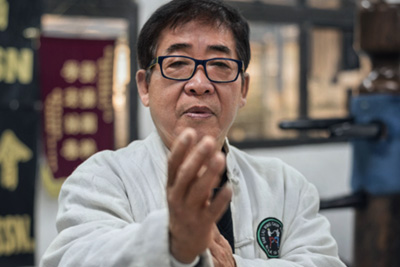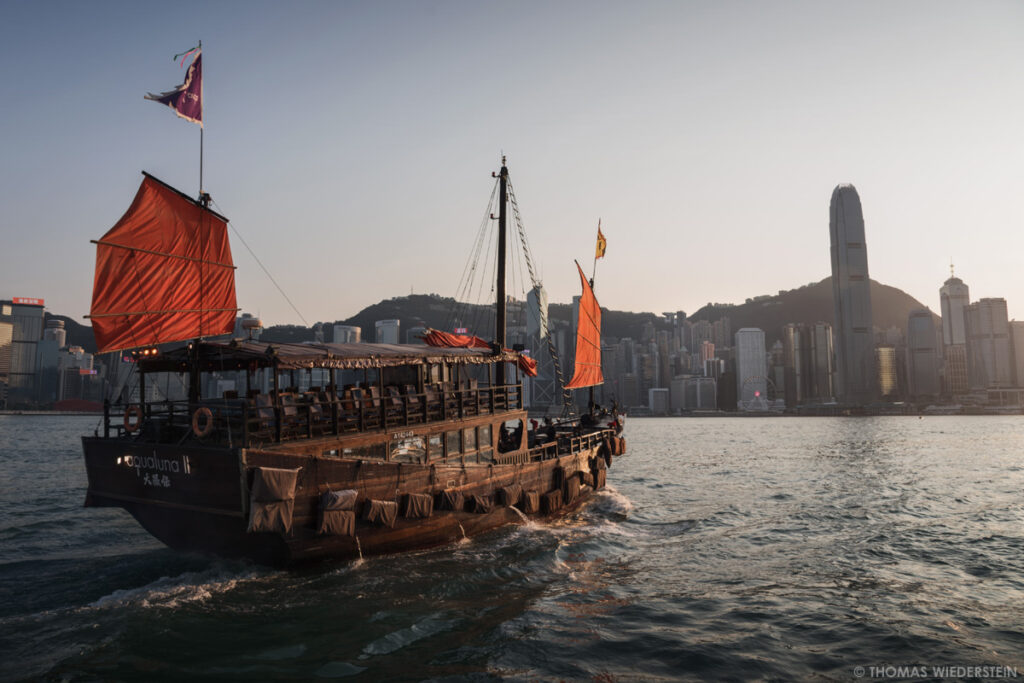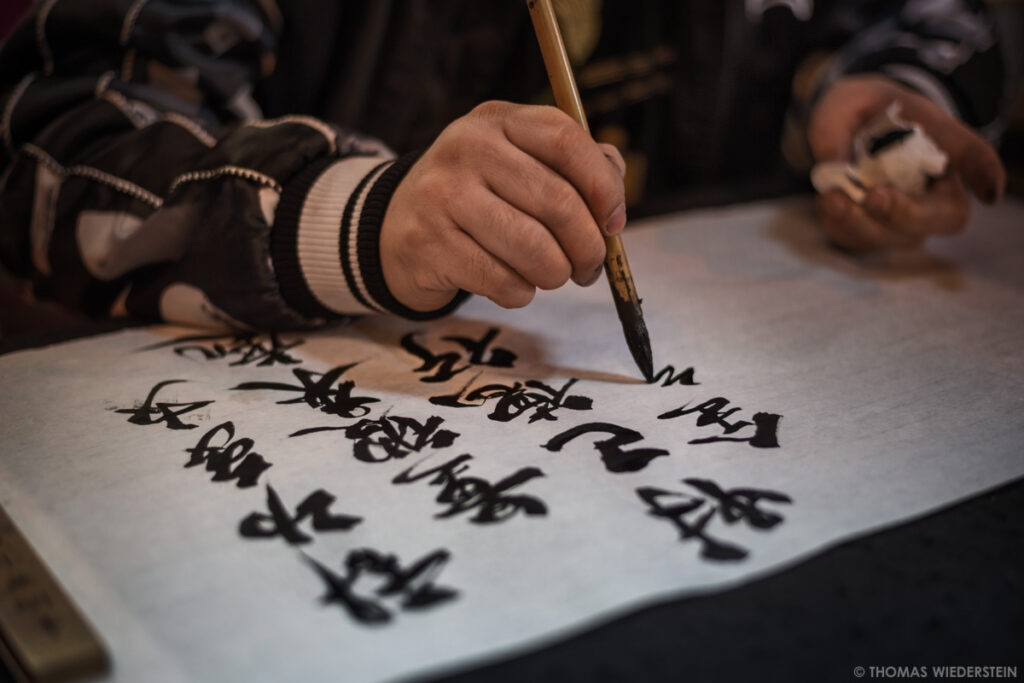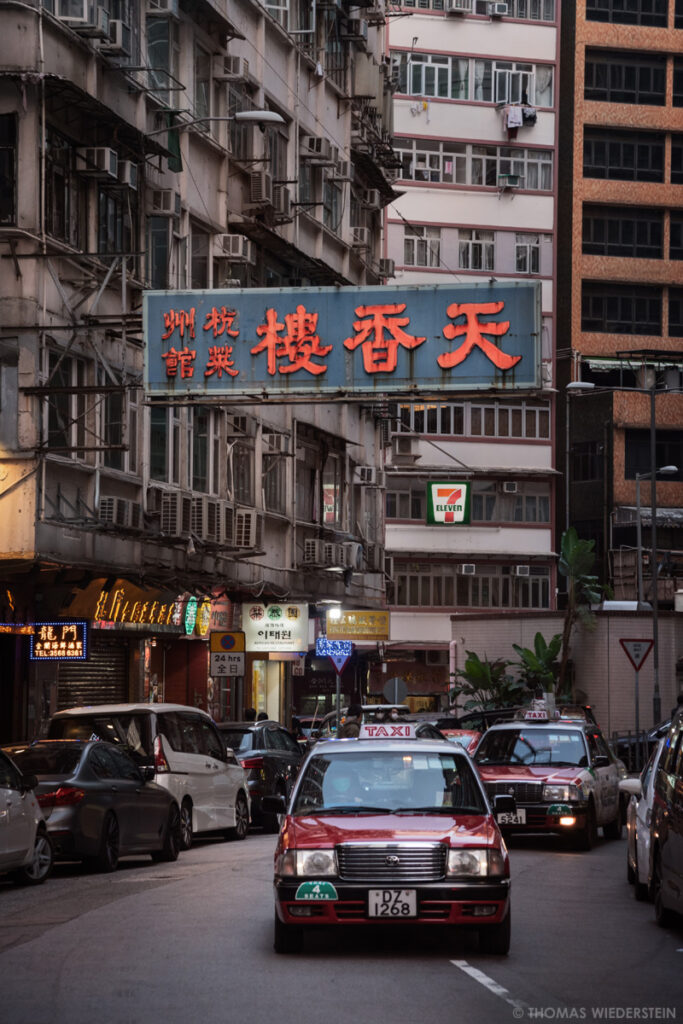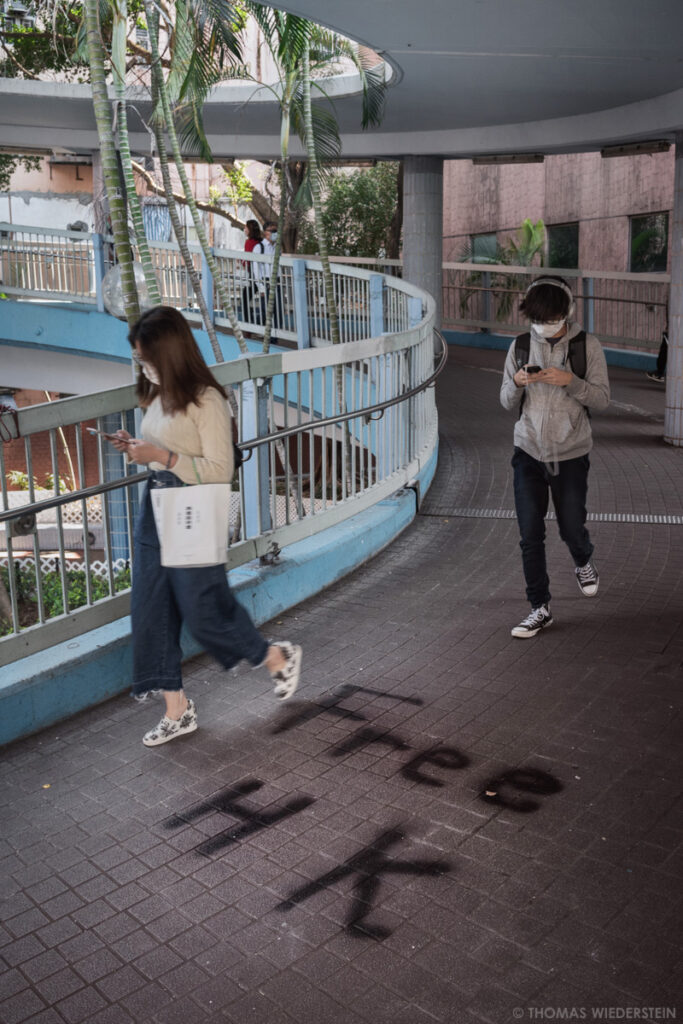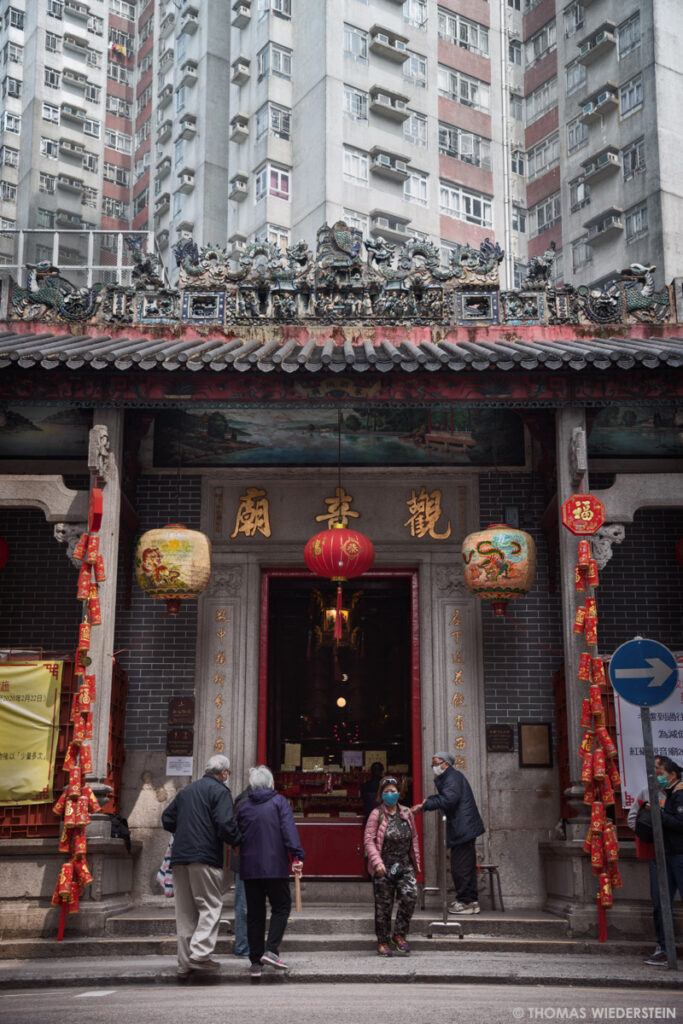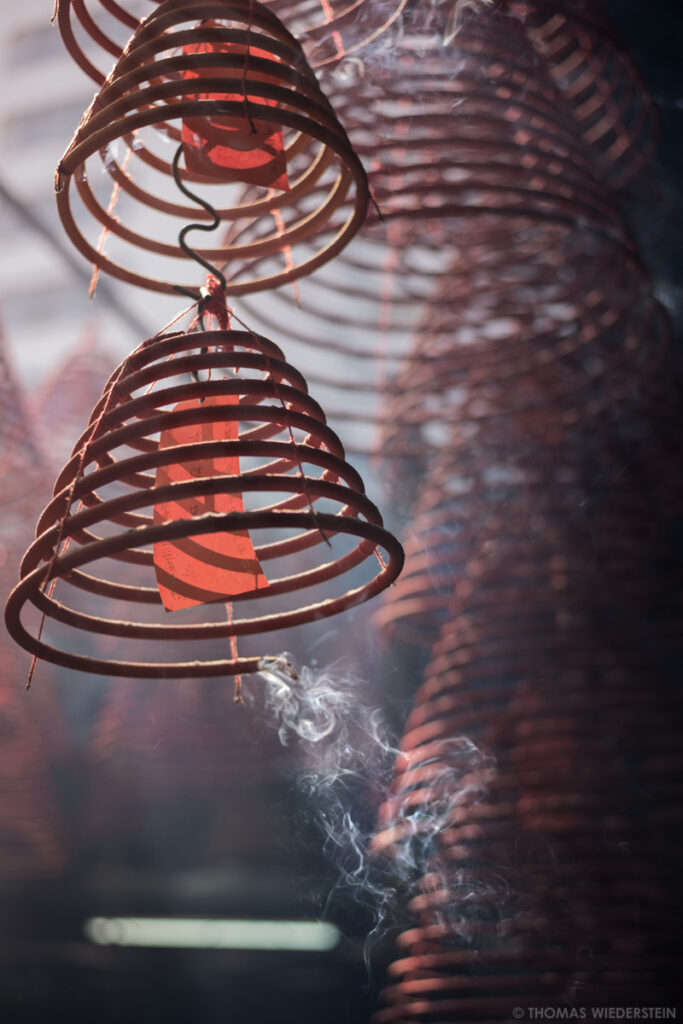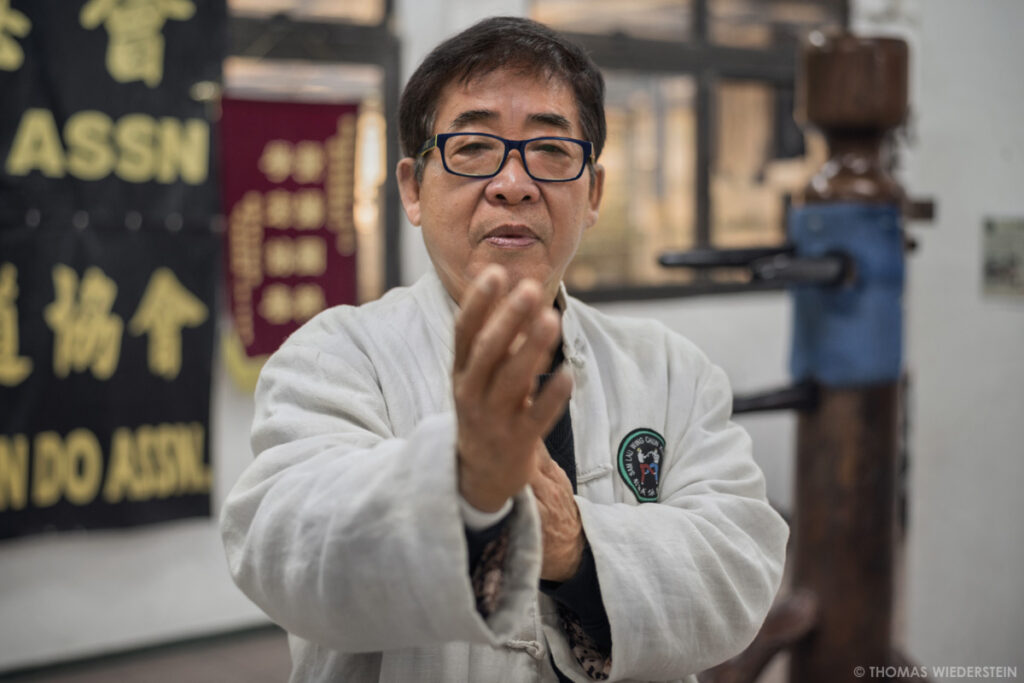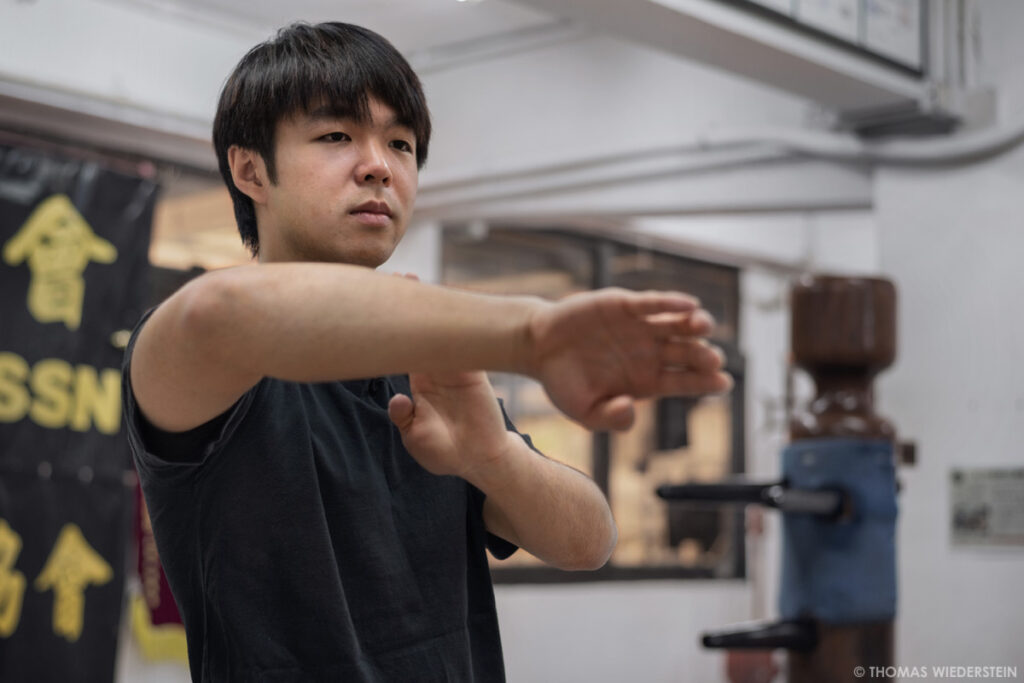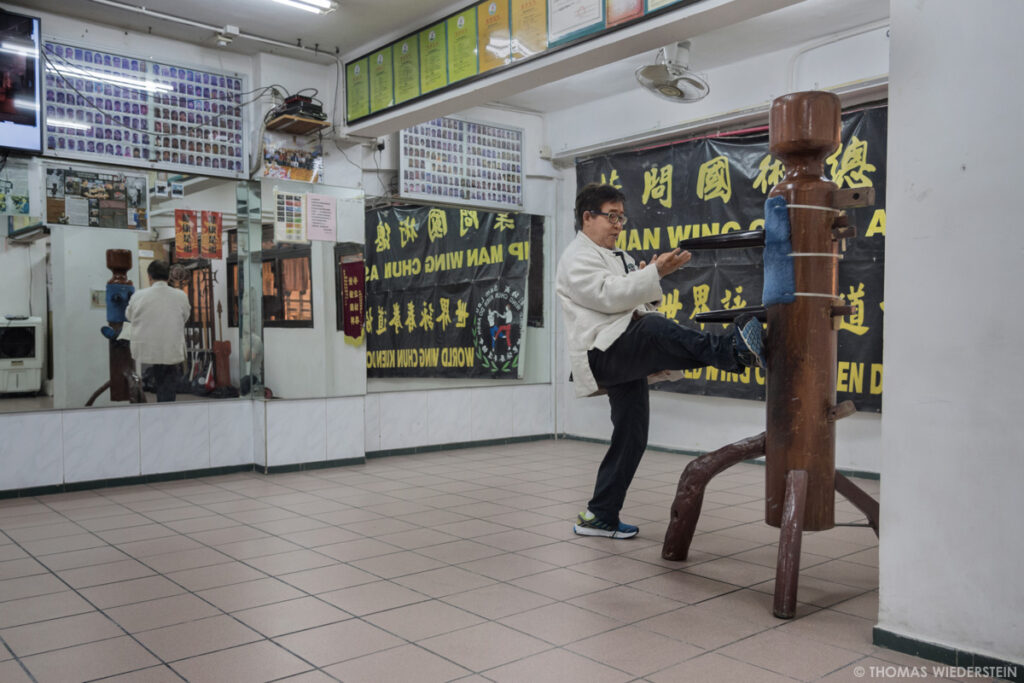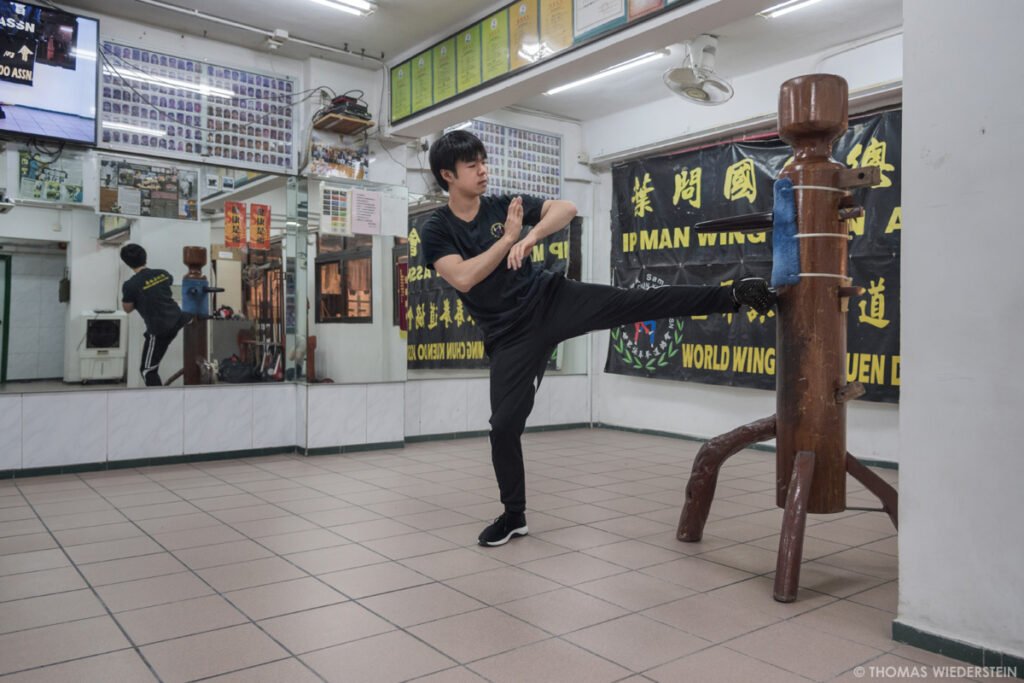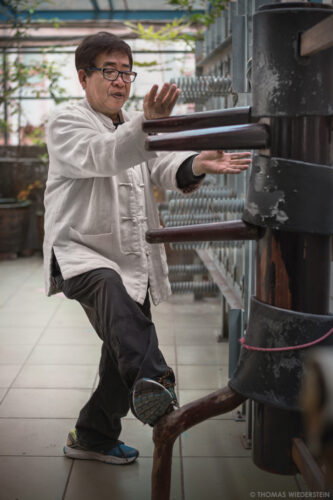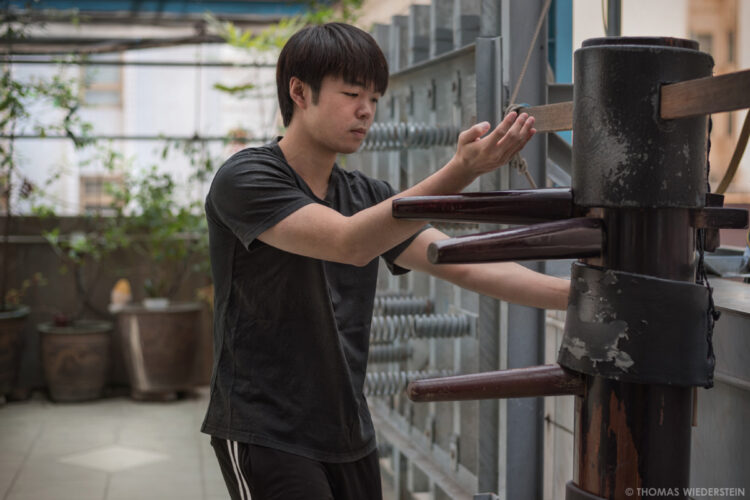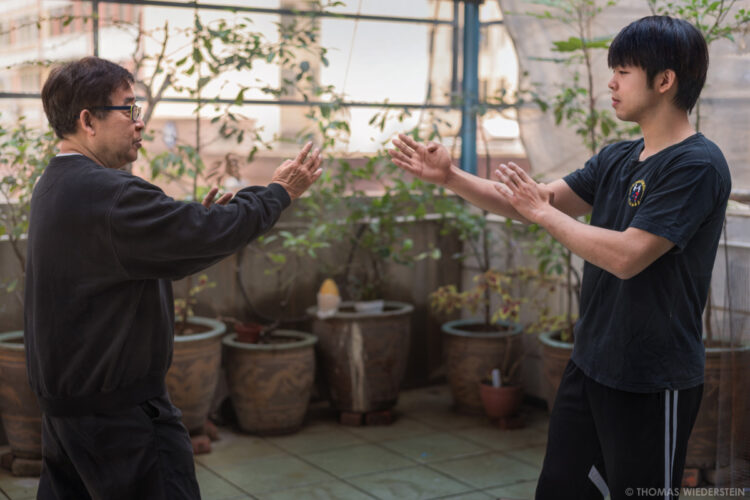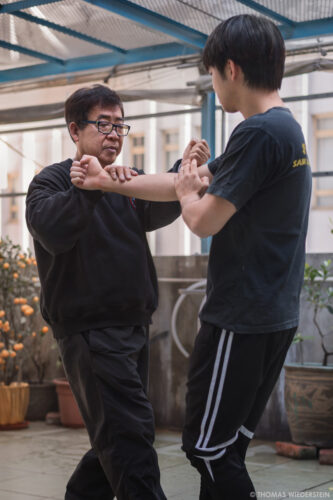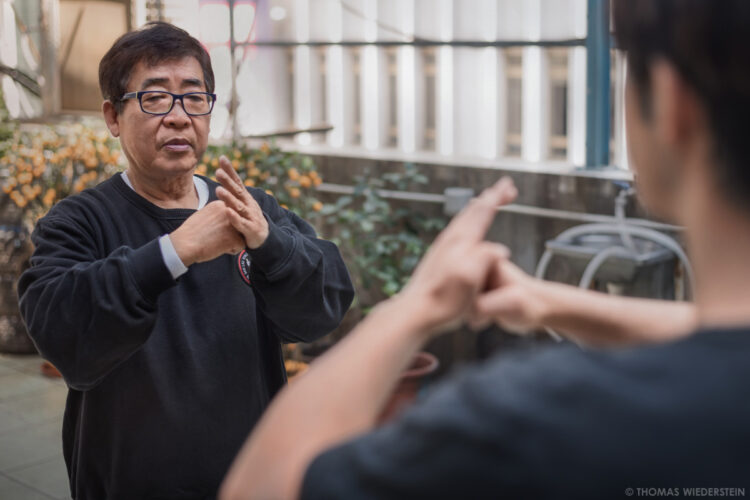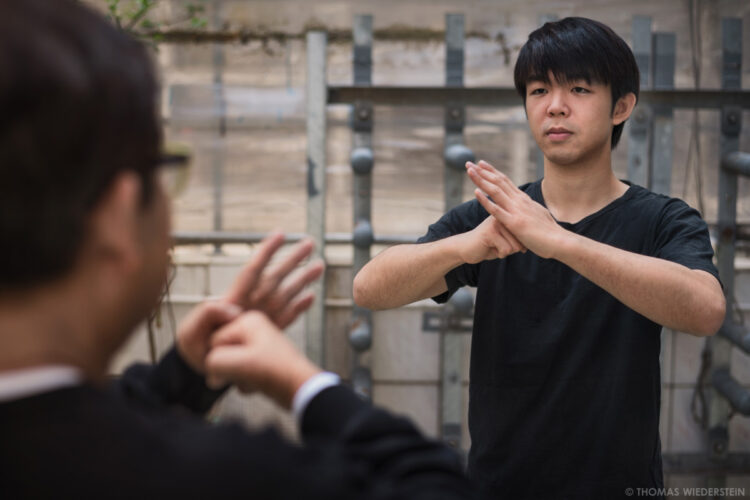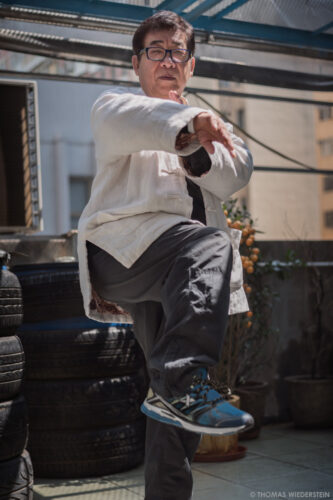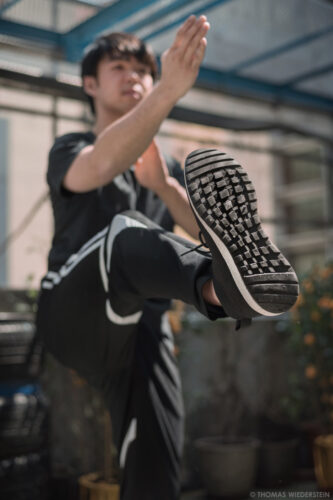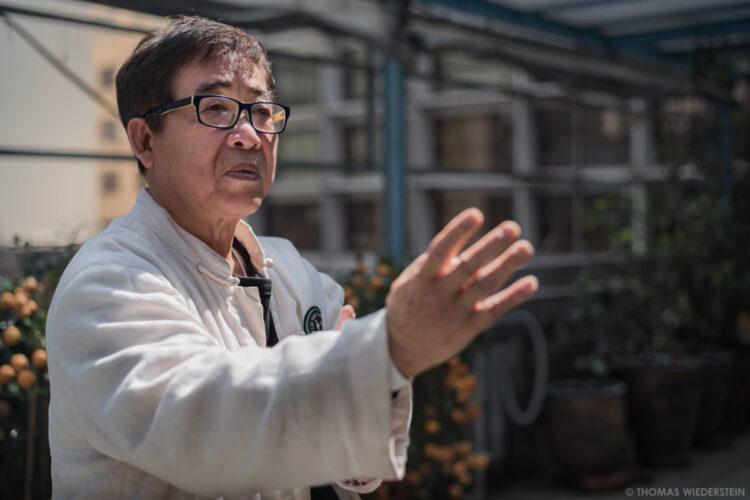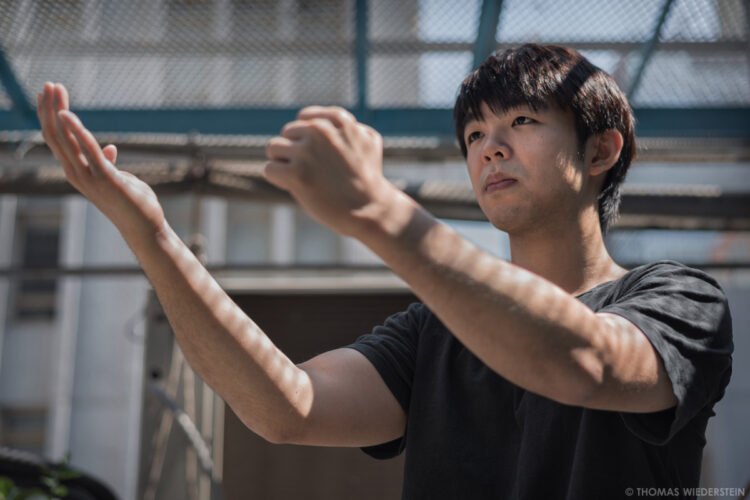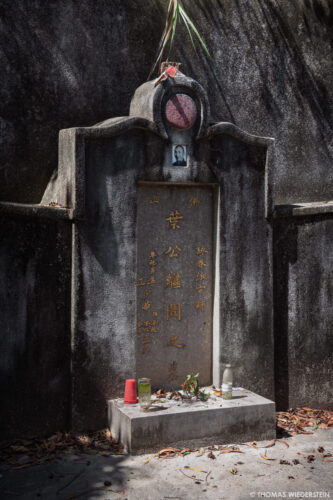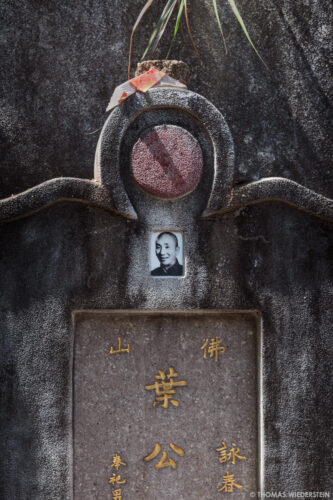I’m leaning on the sidewall of a giant apartment block entrance. My eyes are roaming the vivid street life in front of me. In my hands I feel some sweat loosening the grip to my camera. It’s much hotter than the Middle European winter I came from. I am in the middle of Tsim Sha Tsui, Kowloon, Hong Kong in early 2020.
Hong Kong! It’s my third day here. I came in search for culture, tradition and the ancient arts. To be more precise if and how these attributes of society and history co-exist with a city that seems to be extremely focused on the future and deeply intertwined in international economic competition. The past days I dove into the street life of Kowloon and actually witnessed many signs of a past, that is strongly alive. Between the high-rises I found hidden temples covered in the mist of incense sticks. An old lady and a young banker meet here to worship the Gods. Traditional craftsmanship and arts located in sideroad shops or markets off the beaten track most guidebook travellers use. You need some time to find those places but some are still there. Hong Kong is known for changing rapidly since its early days but the people of Hong Kong also have a strong sense of cultivating their historical and political heritage. The world witnessed this when in 2019 about two million people (out of 7.5 million Hong Kong citizens) entered the streets to stand up for their rights and their freedom against a China that tries to undermine those values more and more. The national security law is the latest aggressive step by the mainland to suppress the autonomy of Hong Kong.
A young man in sport clothing brings my attention back to the entrance of the appartment block. It is Sifu Max Lau. I am scheduled here with him and his father for a photo session and an interview in their Kung Fu school. He is taking the lead and I follow him through the ground floor of the Maridor Mansion which seems like a little city in itself. We get checked for head temperature. There is some virus spreading from Wuhan, China. The people of Hong Kong pull up a wall of hygiene against it – mostly successful, especially compared to the situation that will soon hit my home in Europe. On our way up we make some smalltalk about the weird travel situation caused by the virus. We enter the school. Max’s father is not here yet, so I use the time to get some information out of the room. I spot the classic wooden training doll, some small training arms and coloured mosaics all over the place – photos and newspaper articles actually. I take a closer look and find many prominent figures of the Wing Chun Kung Fu community. Wing Chun – a very effective and straightforward style of Kung Fu made famous by Grandmaster Yip Man (1893 – 1972), the Sifu of Bruce Lee. On the photos I swiftly find the sons of Yip Man, Yip Chun and Yip Ching. The latter sadly passed away a month ago in January 2020. They are standing together with Max’s father, who is an immediate student of Yip Man and the chairman of the ‘Yip Man Martial Art Association’. At that moment Master Sam Lau enters the school and heads towards me. We greet each other with some distance due to virus precautions and I quickly get the impression that his 73 years on paper do not fit his agile entrance. We chat for a moment and decide to start with the interview right away and later move on to the photo shoot.
To understand the current state of Wing Chun in Hong Kong we first focus on the past of Sam Lau and his history in the Martial Arts society. So he starts to tell me about a barber shop which he recalls from his teenage years in 1966. The barber shop where he met Yip Man. Stories were told about Yip’s effective style so the interested Sam used the chance to sit next to the Master and asked if he would teach him some moves. Yip Man first referred him to Moy Yat, a student, where Sam’s time with Wing Chun began. He made fast progress and with a bit of a rowdy attitude he brought his new learned skills straight to the streets, provoking possible opponents randomly and starting fights. A kind of behaviour he is not particularly proud of today, he admits with a smile, but still a part of his course of life. His time as a student of Yip Man started after a planned fight on a restaurant rooftop, which Sam won against an opponent. Master Yip was present and impressed so he chose him as disciple. Due to the fact that he was already trained for some time, he could climb up the ladder pretty fast and soon worked together with Master Yip in training students. Still it was an ongoing process of learning, if not in Wing Chun then in lessons of life. Two years before the death of the Master in 1970 the ‘Yip Man Martial Art Association’ was formed with Sam Lau as its chairman since 1991. Now 30 years later Master Sam Lau has shaped his own legacy with numerous fights and participations in Martial Arts contests. Even though he practised other fighting styles like Western Boxing, he assures me that his style of Wing Chun, the style he teaches to his students, is the true form he was taught by Moy Yat and Yip Man.
As we speak, I look over to Max, Sam’s son, also a Wing Chun Sifu now and the next generation in the tradition of the style. It leads me to my final questions about the situation of Kung Fu now and its perspective for the future. After a lifetime spent in service for Wing Chun, promoting, teaching and living it – how does the prospect of Kung Fu stand in a city and a world where many aspects of life focus towards a business orientated future and less on a look to our past? Sam reflects for a second. Then he continues and says that there are indeed some obstacles. First he admits that there is no big money to be made in running a Kung Fu school in expansive Hong Kong. He needs additional businesses in Kowloon to support his income. There are a lot of students he adds, but the problem is that they do not master the style over a long period of time (Chi Sao). Many start as kids or teenagers and leave the school as soon as they are soaked up by the chase of a succesful career. For him personally it was never possible to stop Wing Chun. It became a way of life. Another problem he faces is the way of some imposters who spent very few hours as students and then open up their own Wing Chun schools all over the planet, claiming they train the true form. For a beginner in Wing Chun these people are not unmasked easily and so it is an ongoing struggle to preserve the reputation of Wing Chun. But with these things said, Sam does not seem very concerned about the future of his school in general. Max is taking over more and more assignments and he seems to bring the motivation that is needed to keep the school and the style of his father alive.
I wonder if this is maybe the key for everything, whether traditional or modern – if someone brings passion and enthusiasm towards it, it will live on, even if money is not the driving force behind it. 2000 years ago a wise man in Rome actually wrote down, that the arts should not be performed as an income, because money has the tendency to corrupt them.
We close the interview and move on to the photo shoot.
Two days later, making a detour to the New Territories close to the chinese border, I am standing in front of the last resting place of Grandmaster Yip Man. A very kind local showed me the way through a dense forest, which is claiming back this old graveyard. With a bow he shows his respect. There is plenty of respect towards the old masters in Hong Kong.
Special Thanks to the whole ‘Sam Lau Wing Chun’ Team, Jan Kaspers and Carmen Trimborn.
© Thomas Wiederstein
